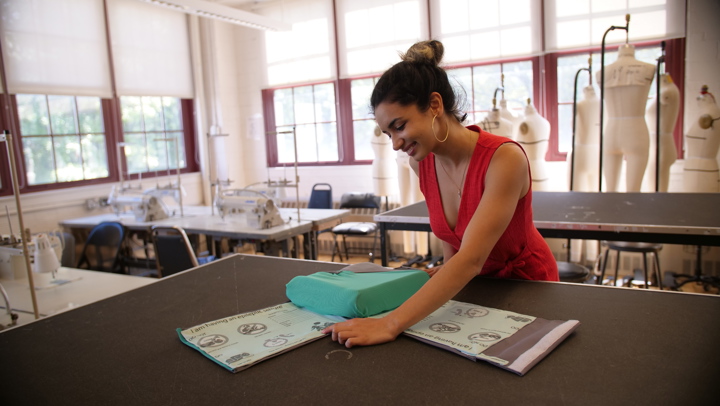According to the Centers for Disease Control and Prevention, 3.4 million Americans have active epilepsy. Epileptic seizures can be dangerous for not only an epileptic, but for by-standers as well. Seizure safe spaces are not always easy to locate and by-standers are often uninformed in seizure recognition and first aid.
Uma Smith, an epileptic and recent graduate of Pratt Institute set out to solve this problem. Her solution, Cocoon, is a unique epileptic seizure protection and alert device which has today been named the national winner of 2019 James Dyson Award. An annual international design competition that celebrates young designers’ innovation and ingenuity. As the US national winner, Cocoon receives $2,500 and advances to the international round of the competition, judged by James Dyson.
The problem that Uma sought to solve is twofold: the lack of independence for epileptics and the misunderstandings of how to respond to a person having a seizure by the general public. Cocoon is a smart epileptic seizure protection and alert device. When an epileptic experiences an aura at the beginning of a seizure, they open Cocoon, lie on their side, and slip Cocoon over the top of their head, leaving their face unobstructed. Magnetic sensors detect when the device has been opened and alerts pre-designated caretakers of the epileptic’s GPS coordinates. An accelerometer detects convulsions while a cell-connected chip calls an ambulance if the seizure lasts longer than five minutes. According to the Centers for Disease Control and Prevention, this is the threshold for when seizure activity can begin to cause neurological damage. Using pressure sensors, if Cocoon is removed from an epileptic’s head, the device will automatically cancel the ambulance and inform caretakers the device is no longer in use. First-aid instructions are also displayed on either side of the pillow, informing by-standers of how to care for an epileptic during a seizure.
Designer Uma Smith says: “My personal experiences with having seizures in potentially dangerous locations inspired this project. Everyone should be able to live an independent life, without fear. I am honored to be the national winner of the James Dyson Award, and truly inspired to make Cocoon a reality.”
Current seizure protection products such as anti-suffocation pillows and headgear do not have seizure alert capabilities, leaving epileptics to carry two different devices. Cocoon combines both seizure protection and seizure alerts, providing epileptics, and their caretakers, with the safety and action necessary during a seizure.
Judge Dr. You Wu says: “Uma of Cocoon paid detailed attention to the user experience for all stakeholders. Her solution effectively achieves two goals at once: protect the person who suffers from seizure, and empower the people who want to help but are unprepared.“
The Runners-up
The two runners-up in the US competition of the James Dyson Award are joining Cocoon in progressing to the next round of the competition, in which a panel of Dyson engineers will select the top 20 international projects.
PeritoneX – Designed by a student team led by Sarah Lee from Johns Hopkins University
PeritoneX is a disinfecting device for peritoneal dialysis tube ends. Peritoneal dialysis filters blood inside the body by using the lining of the abdomen and is a treatment option for those with kidney failure. PeritoneX injects an antimicrobial solution into the connecting space between peritoneal dialysis tubes to kill any surface microbes. It then automatically retracts the solution after the required dwell time.
Strike-Plate Covering – Designed by Pratt Institute graduate Alice Hixon Kirk
Strike-Plate Covering is a mechanism made from flexible plastic that can be retrofit to existing door strike-plates and reduces the noise of loud closing doors by 32%. The strike-plate cover grips itself around the lip of an existing metal strike-plate and cradles the metal latch, slowing down the speed of the door latch and dampening the noise it creates when it springs outward. Made of a softer material than metal, the strike-plate cover dampens the sound of the collision between the existing metal hardware components when doors are opened and closed.



Share this page on